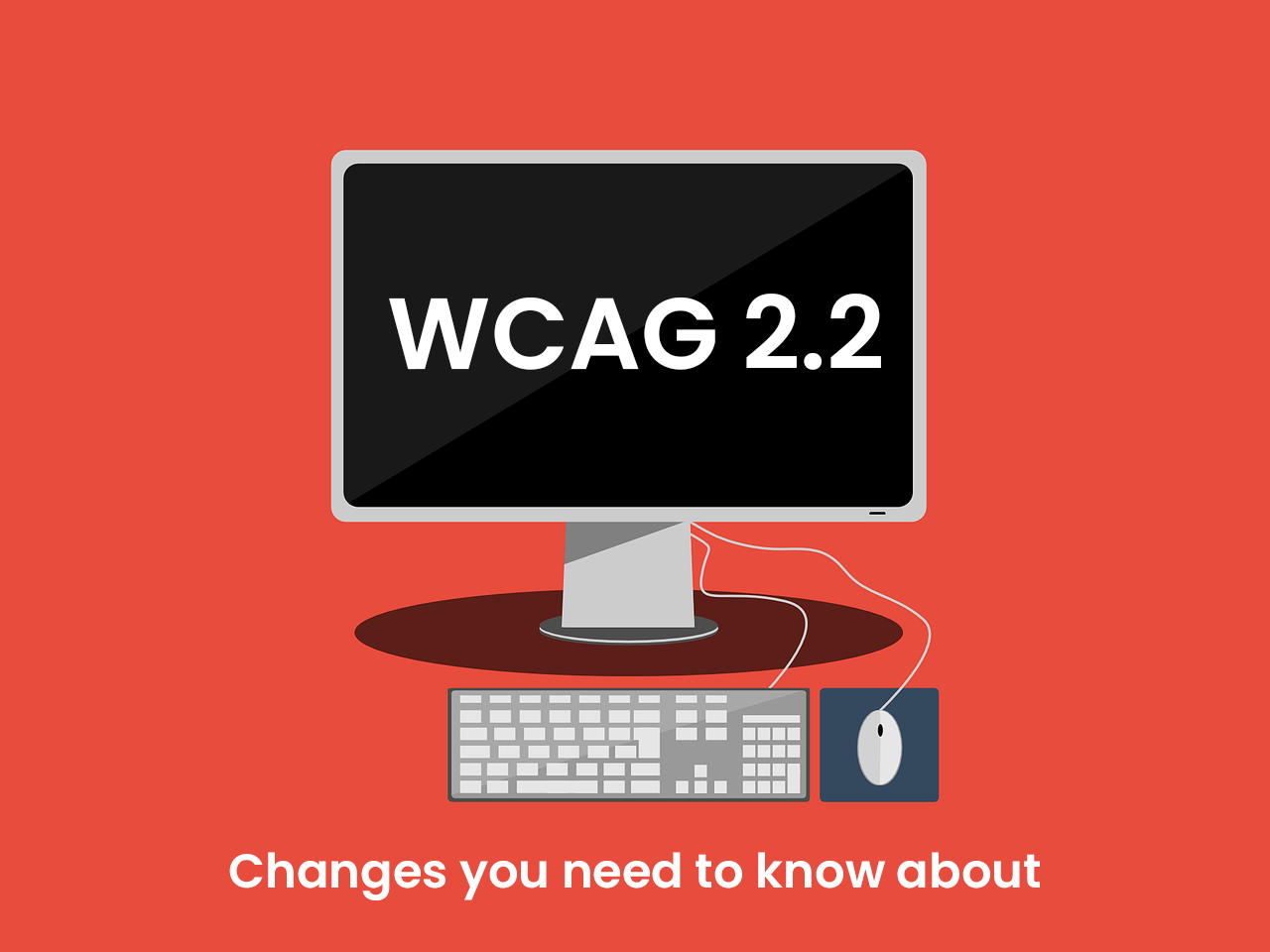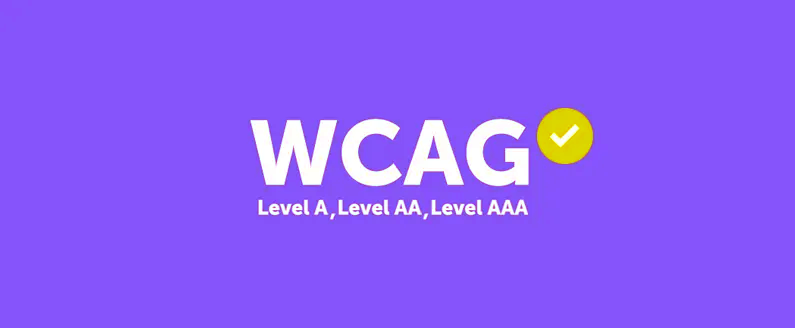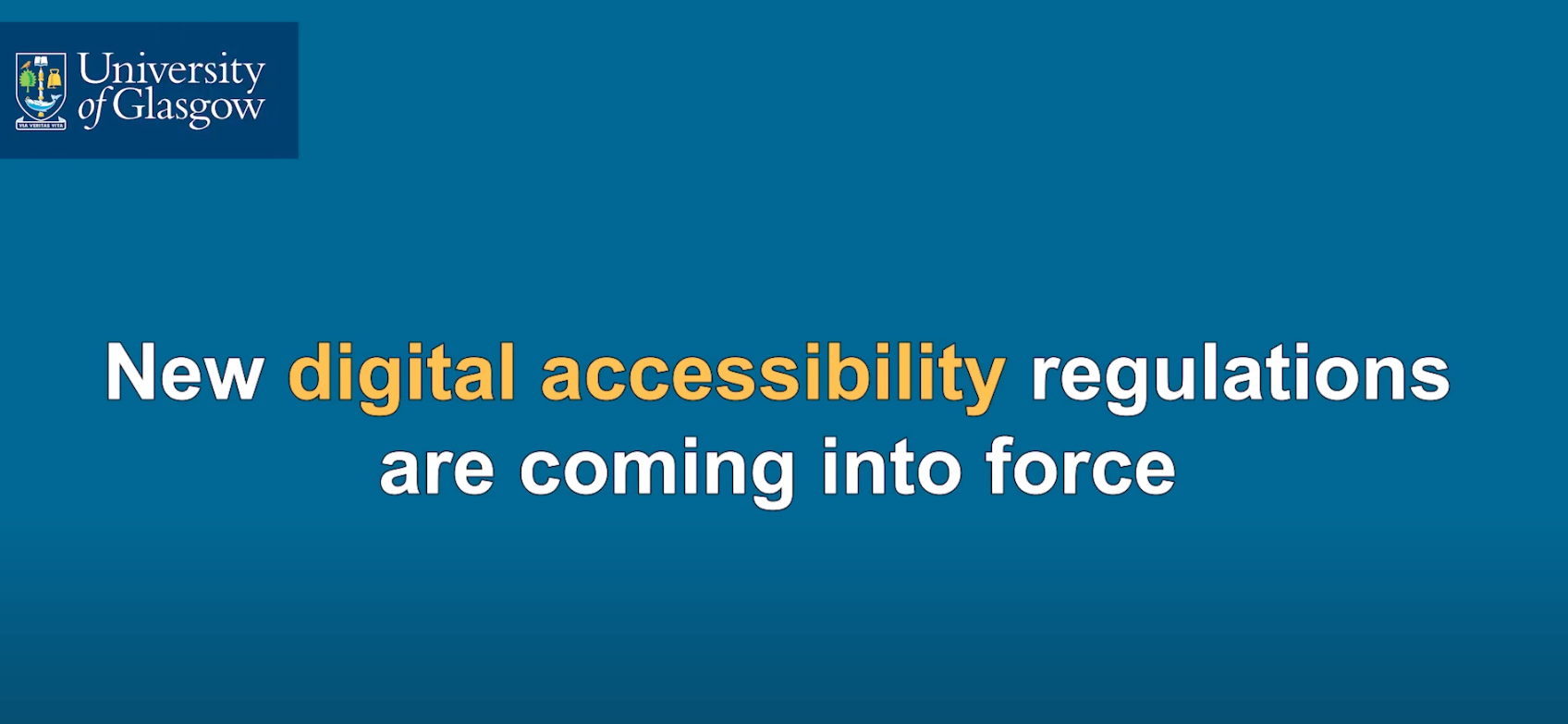Editor's Note: Since the publication of this article, the schedule for publication of WCAG 2.2 has been changed to the Autumn of 2023.
Considered the global gold standard in website accessibility, the World Wide Web Consortium (W3C) has been developing its guidelines for web developers and digital marketing professionals since 2008.
WCAG 2.2, the latest update currently in draft form, is aligned with a rapidly changing online world. It's an improved version of WCAG 2.1 and will become the industry-recommended guideline on digital accessibility before the end of the year.
More supporting documentation is in draft form and will also be published to support website developers.

Backward compatibility
WCAG 2.2 won’t replace WCAG 2.1, so it will allow you to build on accessibility work you’ve already done: anything accessible under WCAG 2.1 will also be accessible under WCAG 2.2.
The finalized 2.2 guidelines are set for publication in September 2022, so there may be some changes, but the working document already sets out nine modifications for web professionals to implement.
This isn’t just best practice advice: certain fundamentals of WCAG are required by law in both the USA and the UK for public-sector organizations.
And for universities and colleges, the new standard doesn’t just impact recruitment through websites—a focus on accessibility should also encompass intranets, online learning resources, and portals.
Three levels of conformance

The three WCAG levels of conformance are the testable success criteria for elements under each of the guideline’s four principles, which state that content must be: perceivable, operable, understandable, and robust.
- Level A – Essential for basic accessibility. All websites should meet this level.
- Level AA – Makes a website reasonably accessible and usable for the majority. This is the standard adopted by most higher education institutions.
- Level AAA – Strict criteria to make a website useful to all. This level is hard to achieve, as not all types of content are capable of compliance.
What’s new in WCAG 2.2?
Currently, most institutions look to WCAG 2.1 for accessibility guidance. But the updated draft guidelines outline nine developments you should be aware of.
Here’s our quick rundown.
#1 Accessible Authentication - Level A
Accessible Authentication is an addition to level A requirements for users with cognitive challenges such as memory issues or dyslexia.
It means there needs to be a secondary way of completing a cognitive function test, which requires the user to remember, manipulate, or transcribe information. This can include functions such as log-in fields, authentication processes, or ‘anti-robot’ photo or number puzzles.
Ways of improving accessibility and support in this area could include allowing password manager access or copy-and-paste entries.
And this will benefit all users. After all, how often do you forget your password to a website? Blockers to logging in can put off any user, regardless of technical capability.
#2 Consistent Help - Level A
Consistent (findable) help can include human contact details, an automated contact mechanism such as a chatbot, self-help options like searchable FAQs, or human response contact methods such as an onsite chat that is easy to find.
Most websites with a ‘contact us’ page will already pass this level A criterion, but help needs to be easy to find and navigate. Relentlessly tapping the back button or searching multiple pages for the relevant help information can hinder accessibility and create frustration.
#3 Page Break Navigation - Level A
Content like digital versions of print documents need to provide page break locators (fixed reference points) as a means of navigating the text, under this level A addition.
This enables those with screen readers or other assistance methods to explore documents with ease, and, for example, find the right page even if text has been enlarged on their view.
This is especially relevant for higher education due to the number of online learning materials and resources.
PDFs, for example, automatically offer this functionality, though they, too, have accessibility challenges.
#4 Redundant Entry - Level A
This criterion is intended to reduce the effort needed to complete tasks for all and is set to become another level A criterion.
If information has to be entered by a user more than once (for example, an address) into a website, the field should be auto-populated or the information has to be available for the user to select.
There’s an exception to this for when re-entering information is essential or for security purposes.
#5 Dragging Movements - Level AA
Unless dragging is essential to functionality, the result of the movement should also be achievable by an alternative single pointer under this new level AA criterion.
This covers tasks like dragging-and-dropping items into a cloud sharing app, for example, or from one column to another.
While dragging movements can enhance user experience for some, it can hinder it for others, such as those with reduced motor skills or using input devices such as speech-controlled mouse emulators.
#6 Target Size (Minimum) - Level AA
Targets, such as buttons, on the website should have an area “of at least 24 by 24 CSS pixels” in this level AA criterion, so two or more targets are not placed too close together.
This is so that users can select or click targets with their mouse or another device easily, and without accidentally activating other nearby targets.
#7 Visible Controls - Level AA
Visible controls are components or navigation options triggered by mouse or keyboard focus, such as a hyperlink.
This update to WCAG, at level AA, requires these controls to be clearly visible, except for in a small number of scenarios.
A hidden control will only appear on the screen if the user takes a particular action, such as hovering the mouse over the relevant part of the page, but this can impact accessibility for those with low vision, among others.
Websites hiding controls for aesthetic reasons can consider adding functionality within the page to keep controls visible.
#8 Focus Appearance (Minimum) - Level AA
This revised level AA criterion ensures that a page’s focus indicators—the highlighted field the user’s mouse or keyboard is positioned on—have acceptable contrast and size metrics as well as being clearly identifiable and unobscured.
A contrast ratio of 3:1 is recommended between colors of focused and unfocused content.
This is especially important for keyboard users in understanding where they are on a page. Every element on the site has to be accessible from the tab key.
#9 Focus Appearance (Enhanced) - Level AAA
To achieve this level AAA criterion, there needs to be an area within a focus indicator with a contrast ratio of at least 4:5:1 between the colors in the focused and unfocused states.
Again, no part should be obscured, and the contrasting area should be “at least double the area of a one CSS pixel perimeter of the unfocused component.”
Is WCAG a legal requirement?
WCAG 2.1 AA conformance is generally accepted as best practice for accessibility compliance globally.
In the United States, federal agencies and their contractors are required by law to comply with both level A and AA of the WCAG 2.0 standards.
For private companies, it’s a bit of a grey area, but they are legally obliged under disability law to make websites accessible. As detailed by the Bureau of Internet Accessibility, WCAG is regularly cited in rulings as an acceptable level of compliance.
Similarly, in the UK, the accessibility of websites is covered by the Equality Act 2010. The government has adopted WCAG 2.1 levels A and AA, and this is widely seen as a good approach and safeguard to discrimination cases for all other websites. The picture is similar across Europe.
(WCAG 3.0 is also in the works, but it will be several years before this standard is finalized.)
So while it will be a good while before WCAG 2.2 is incorporated into regulation, early compliance is a great way to show your school’s commitment to accessibility.
Widen your audience
WCAG isn’t just about legal protection. It’s about making inclusive websites that everyone can use and navigate, no matter their mental or physical ability.
Every website should be complying because they want to appeal to everyone in society; and for universities, this is especially important.
Anything but basic standards of accessibility is seriously going to limit audiences and can impede your recruitment efforts.
This video by University of Glasgow students, made following the previous WCAG update, brings home the importance of accessibility and what it means to those with disabilities or learning challenges.
Lagging in the accessibility field will not only alienate your institution from prospective students but also from current students.
Accessibility and inclusivity should therefore be top of the agenda in digital strategies for 2022, particularly with the latest guidelines to be published in September this year.
What do you think of the new WCAG updates? Has your university done everything it can to comply with accessibility standards?
We’d love to hear your thoughts in the comments below or on social media.
 |
 |
 |
|---|

:format()//media/WCAG-2.2-accessibility-in-2022-for-higher-education-RQ.png)
